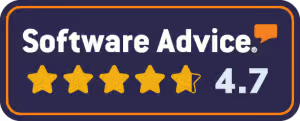According to Experian, trends are pointing toward 2023 being a busy year for debt collectors. The S&P/Experian Consumer Credit Default Composite shows defaults have steadily increased since late 2021. Not to mention, relatively high-interest rates, volatile market conditions, and recession worries among consumers. Many publishers and various advertising outlets are putting their collection strategy at the forefront of their planning to reduce outstanding liabilities. Others have already mastered the art of collections by implementing strategies that work best for their company and community.
The collections industry is quickly evolving, and staying up-to-date with trends can help you build a strategy that benefits both you and your customers. A deep dive with three industry-leading partners has proven that collections, while a necessary evil, can be efficient, personalized, painless, and friendly.
Keep it Personal and Transparent
With more than 25 years’ experience in the publishing industry, Ross Furukawa understands the challenges of debt collection. As co-founder and president of Santa Monica Daily Press, Furukawa stresses the number one collection strategy should be to keep it personal. “You cannot just send a [generic] form that people are used to seeing every month. They are going to ignore that,” he said. “But if the communication is coming from a [known] person and has information specific to that customer, they are more likely to take notice.”
He also mentioned including a tear sheet of the specific ad that ran will help to catch the client’s attention. “It’s really effective to put a link to the PDF to show where it’s live in the magazine, online, etc.,” says Furukawa. “You can also provide them with some analytics so they can see how well their ad is doing. They can see you have delivered on your end of the deal and it is time for them to deliver on the invoice. Give them all the information up front, so there is no back-and-forth, eliminating extra questions and being very clear and transparent with your communication.”
Publisher of Southlake Style Mike Tesoriero can speak well to the importance of transparency. If you have ever lived in a small community, you understand that word can travel fast. This works both to Tesoriero’s advantage as well as keeps him in check when providing pricing to clients. “We’ve been publishing for 17 years and really have not had a serious issue with collections,” he said. “I liken that to the size of [our] community as word travels fast. Our community is about 30,000 people. Everybody knows everybody and we have a long-standing customer base. When there is a hyper-local setting, people tend to be on their best behavior.”
On the flip side, Tesoriero says they are 100% rate card and always have been. This further promotes the importance of transparency to their clients creating a culture of trust. “I tell [clients] they are getting the same price as everyone else. And it is that simple,” he said. “If we gave people various discounts, we would be shooting ourselves in the foot, and I have watched other publications do just that. So we are proud of that. If you give a deal to one person, you must give it to everyone.”
Automation Increases Efficiency
During the last decade, digital outreach via automations has become one of the biggest and most significant forces behind effective credit collection. It provides several touchpoints, such as email, texts, app notifications, and more that can be deployed efficiently, saving time and money. This increased speed and efficiency can help publishers collect debts more quickly, improve cash flow, and reduce the risk of bad debt.
Automation can also help businesses reduce their labor costs by eliminating the need for manual data entry (aka: spreadsheets) and reducing the need for a large team of debt collectors. It can also run with minimal supervision, freeing staff to focus on other tasks. The cost savings can be substantial, allowing businesses to allocate these resources to other areas of the business.
Debtors are often more responsive to automated reminders and communications, as they come with greater consistency. A system is in place to give debtors thorough information about their debt, payment options, and the outcomes of not paying. This helps them comprehend their responsibilities and make informed choices about their obligations.
Automation can be extremely helpful when implementing payment plans, if done correctly. If you are considering instituting payment plans (or looking for ways to simplify your existing payment plans) you must ensure your accounting software is in sync with your ad sales CRM software. Depending on how your sales team’s software interacts with your accounting team’s software, invoicing and payment plan processes can become complicated. You will want to ensure your timeline of payments is properly synced with your reporting so you can see accurate sales results by product (or per month, quarter, issue, etc.).
Tesoriero says they have greatly benefitted from automating their collections and received 90% of their collections on the first of the month. “[Automations] have really streamlined our interactions,” said Tesoriero. “We start our collections two weeks in advance and then usually by mid-month everyone has paid. And it is that easy. There are a few customers who require some special accommodations in order to get the invoice paid and we will work with them to set up a payment plan.”
Make It Easy to Pay
Within any business that sells advertising, the accounts receivable team has a demanding job on their hands — especially when advertisers do not pay on time. Sound familiar? Not to fear. One step can help reduce the number of calls, emails, and letters to track down payment, and it is easy to implement: advertiser autopay.
Autopay saves your A/R team time. It saves your advertisers’ accounts payable team time, too. And, with a little help from the right ad sales software, it is a snap to set up and get rolling.
If your advertisers have paid invoice-to-invoice for years, they may be reluctant to switch to autopay. This is where messaging matters. Autopay is a mutually beneficial courtesy for both parties involved. Your advertisers are still able to scrutinize invoices and communicate with your team about their charges before a payment is scheduled, just as they would with print invoices.
However, with autopay, payments are applied without printing checks, stuffing envelopes, or paying postage. Not only are your advertisers’ saving dollars, they are saving time — and let us not forget about the trees!
Whether you manage an issue-based magazine or you are selling programmatic digital ads, your A/R team is the link between your sales and the dollars your business is owed. By automating repetitive tasks, such as invoice creation, and reducing the need for time-consuming follow-ups on late payments, your A/R team can focus on:
- better, more accurate record keeping.
- faster resolution of billing discrepancies.
- personalized customer service.
Software automation cannot replace an all-star accounting staff. But it can provide them the time they need to focus on tasks that move the needle for your business.
In addition to autopay, many publishers and their advertisers benefit greatly from payment plans. Sometimes businesses hit a rough patch, but working with them to clear up their debt will earn big points with your customers. “If an advertiser is having trouble paying, we get their rep involved,” said Logan Aguirre, publisher of 417 Magazine. “We work with them to change their contract to a more manageable amount or let them move insertions further out to help them catch their breath. We are incredibly flexible and accommodating because we would rather they stay with us and work with us than cancel and leave us high and dry. I do not remember the last time we had to write off bad debt.”
Just like other publications, Aguirre says they do require advertisers to keep a card on file and implement other strategies to ensure new customers start out on the right foot. “We require a credit card on file and every new advertiser has to pay their first ad upfront two weeks before we send it to the printer,” said Aguirre. “Depending on when they sign their contract, if there is enough time, we let them break that first payment into a few payments so that it is not a deterrent for starting with us. We do a lot of “flat bills” for clients where we take their contract total and even it out over the 12 months to help them manage their cash flow.”






